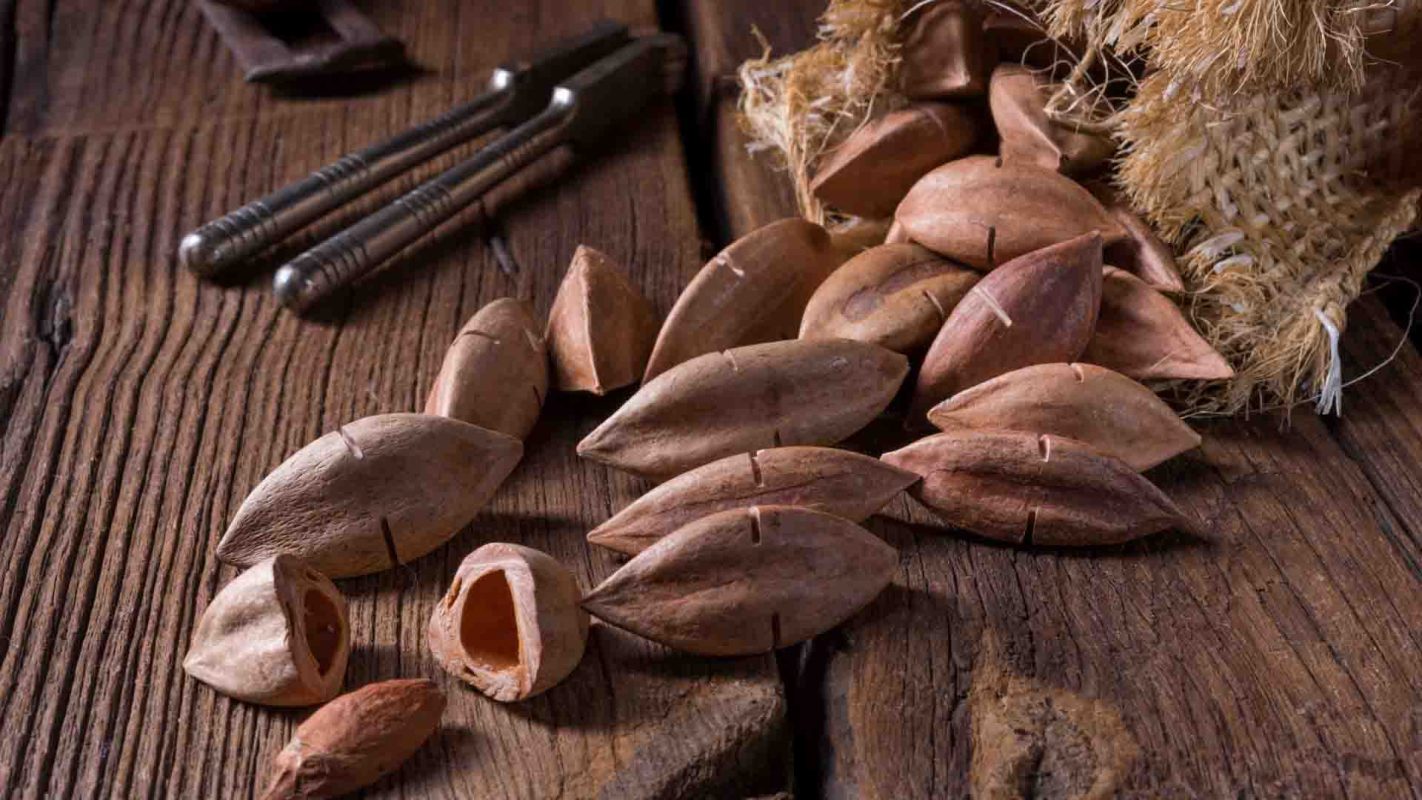The kenari nut is a tear-shaped nut native to Indonesia. Its flavor is similar to other nuts like cashews and macadamias, except it has one big advantage over its brethren — it might help our planet's rainforests.
What is the kenari nut?
Though perhaps not as well-known as other tree nut varieties, the kenari nut has a pleasant, mild taste and a buttery mouth feel. It's this smooth consistency that led food scientist Marcello Giannuzzi, founder of vegan, kenari-based ice cream brand Nth Wonder, to tell the BBC that kenari makes "an excellent dairy substitute."
Kenari nuts are similar to both pili nuts, grown in The Philippines, and galip nuts, grown in Papua New Guinea, all of which come from the same family. These closely related nuts are nutrient-dense, providing healthy doses of iron, magnesium, potassium, and zinc.
Why is the kenari nut important?
Because kenari nuts grow on wild trees, primarily in rainforests, they are much more sustainable than other dairy substitutes, like almonds. It takes 1.1 gallons of water to grow a single farmed almond, whereas wild kenari nuts grow using only rainwater.
"If we could commercialize more wild nuts from the rainforest like kenari," professor Helen Wallace of Griffin University in Brisbane, Australia, told the BBC, "it will help to diversify our food systems, prevent carbon loss and preserve our rainforests."
How can it help save rainforests?
The cultivation and sale of wild kenari nuts can provide a strong economic incentive to prevent deforestation.
From 2013 to 2018, kenari nut exports increased by 80%. In late 2022, the kenari nut gained a key approval from the European Food Safety Authority, paving the way for it to be exported to the EU's 27 member states.
And the nut's newfound popularity comes at a time when rainforest deforestation in Southeast Asia is already dropping. In 2021, rainforest clearing for palm oil cultivation reached its lowest level since 2017.
Want more? Follow The Cool Down on Instagram and join our Weekly Newsletter for cool stories and easy tips that save you money, time, and our planet.







